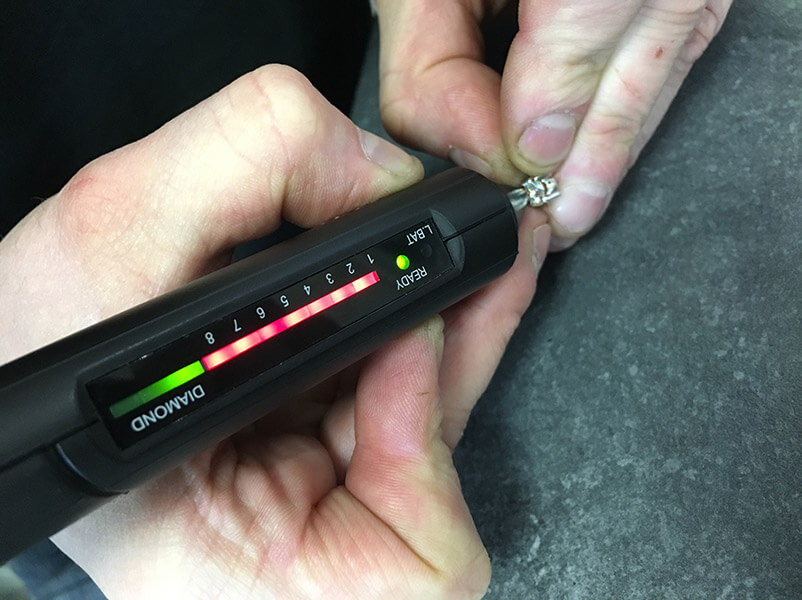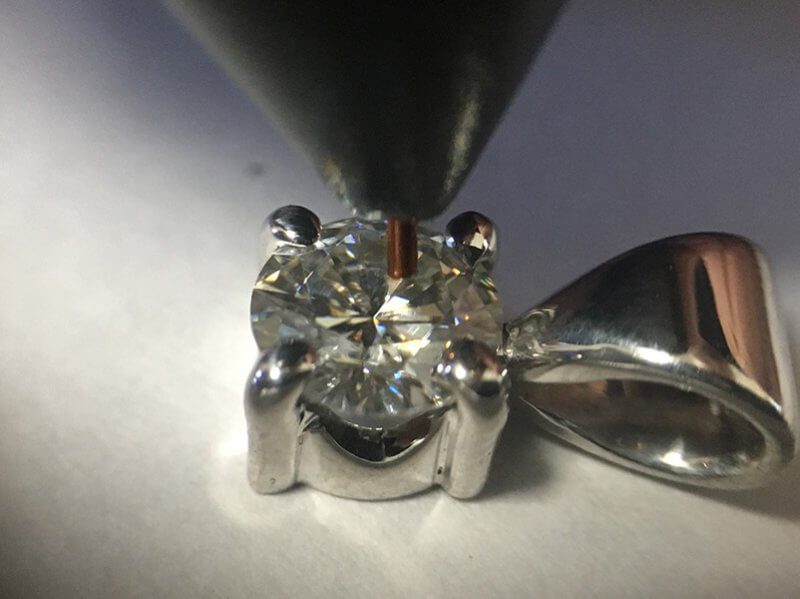When Is A Diamond Not A Diamond
With diamond prices maintaining a market high for many many years, alternatives to the timeless gemstone have been to enable a similar look for considerably less money.
As much as some stones may look like diamonds when new, the likes of Cubic Zirconia, will very quickly wear and not look the part. There has been a strong contender for the humble diamond, the Moissanite, which although is a genuine rare mineral its it own right, has been patented to be synthesised by laboratories since the late 80’s . The Moissanite , at first, wasn’t much of a threat to the diamond, as prices for the synthetic gem commanded up to 50% of the diamond equivalent. Of late, the cost has been reduced considerably, meaning a stone that looks very similar to diamond to the untrained eye can be set in a engagement ring and most wouldn’t be able to spot the difference. Even a high-quality diamond testing tool can be fooled. This is because the silicon carbide stone has very similar heat properties to a diamond, and this can cause a misleading sale to those not in the know.
So do people get sold Moissanite fraudulently? In general, No. It would be more than a bona fide jewellery shop would dare do! But I have seen cases where the general public have been prayed upon by unscrupulous traders, mainly in countries abroad, tourist destinations where people think they are getting a better deal on a diamond. Whilst not wanting to scare-monger, it is always going to be a safer option to avoid buying anything, let alone gemstones, from traders in places outside your comfort zone. If genuine diamonds were really available for a fraction of the price elsewhere, us traders would buy them ourselves, please be assured. Follow the rule, if it looks to good to be true, it probably is.

So how do you avoid a scam? Quite simple really. Buy from somewhere that can prove to you what you are buying. A diamond tester may be fooled by a synthetic but a professional or gemologist can show and prove to you what’s what. For example, the vast majority of high end diamonds will be backed by a gemological certificate, like a GIA certificate. On these diamonds, a laser inscription of the corresponding certificate number is harmlessly etched onto the girdle of the diamond and can be easily located by a jeweller using a 20x magnification. This can be cross-checked to the certificate itself, which also bears security marks to avoid imitations. Don’t trust the certificate? Ask for the number! This code can be then cross-checked on the gemological authorities website.
Buy from someone you trust. And leave the holiday purchases to be no more extravagant than the local cocktail….
Contact us now to discuss your requirements

